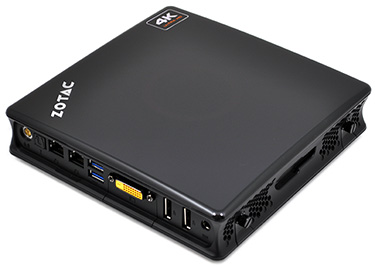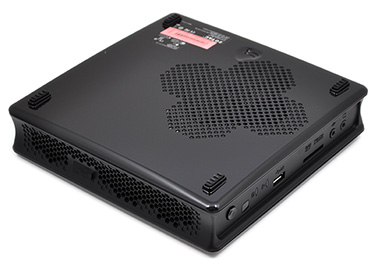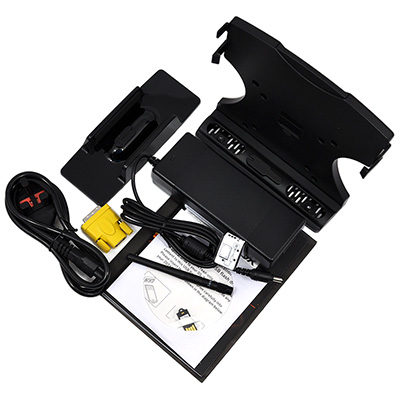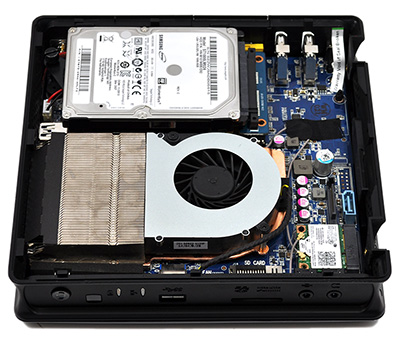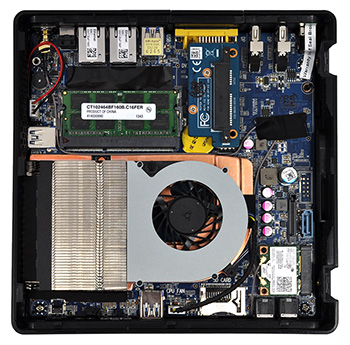Introduction
Which is the best CPU in Intel's fourth-generation 'Haswell' Core i7 stable? There's no shortage of choice - the i5-4210Y offers excellent credentials in an ultra-low-power package while the the i5-4440 hits an agreeable balance between price and performance - but from a purely technological standpoint, we'd be leaning toward the i7-4770R.
Armed with almost all of the quad-core prowess of the enthusiast-orientated 4770K, and topped-up with Intel's best Iris Pro 5200 graphics, the 4770R has the best overall combination of current Intel processing technology, and it wraps it all nicely in a 65W power envelope.
The catch? Well, it's a pretty big one: you can't go out and buy a Core i7-4770R. For this generation, at least, Intel's best desktop CPU-and-IGP combination is a socketed part reserved solely for OEMs who can choose to integrate the chip into turnkey PCs. Trouble is, there aren't many desktops carrying the premium 65W chip, and those that have attempted to use this attractive processor haven't been without fault: Gigabyte's Brix Pro shoehorned the i7-4770R into a teeny-tiny enclosure and paid the price in terms of sky-high temperatures and unbearable noise.
Zotac, who has plenty of mini PC experience under its belt, reckons it can go one better with the Zbox EI750. In keeping with previous Zbox solutions, the EI750 will soon be making its way to retail stores in two flavours; a barebone system priced at £520; or a 'Plus' model that includes memory and storage at a total cost of £650. Both are outfitted with the Core i7-4770R chip, complete with Iris Pro 5200 graphics, however bear in mind neither ships with an operating system as standard.
The Zbox EI750 Plus is under the microscope today, and a few small changes are evident at first glance. The size and shape of Zotac's chassis remains untouched - it's still a 188mm x 188mm x 51mm frame built primarily of plastic - but the colour scheme has been updated to an all-black finish that's visibly more attractive. The familiar backlit ring continues to illuminate the main side panel when powered on (note it can be disabled through BIOS), though the colour of the ring has also changed - it's now a Zotac orange as opposed to an Intel blue.
The Zbox typically offers a good choice of connectivity options and Zotac keeps that trend going with a wide array of inputs and outputs. The back of the box is equipped with an attachment for the bundled wireless antenna, optical audio output, dual Gigabit Ethernet jacks, a pair of USB 3.0 ports, DVI-D, two DisplayPorts and a connector for the 120W external power brick.
There's a covered USB 3.0 port on top of the box, and another on the front alongside a multi-card reader, headset and microphone jacks, IR receiver and power button. We like the fact that DisplayPort is now featured as standard - making it easy to attach a high-res 4K screen - and while three displays are supported as standard, it's possible to attach four 1080p panels via optional DisplayPort-to-dual-HDMI adapters.
Zotac's bundle includes a desktop stand, a VESA mount that allows the entire PC to be attached to the rear of a compatible monitor, and a DVI-to-HDMI adapter. It is good to see drivers provided on both CD and USB, but a few other expected accessories are nowhere to be seen. Previous Zbox models have shipped with bundled remote controls and extended IR receivers: neither are included this time around.
Opening-up the EI750 reveals some of the more pertinent details. Taking up the most room is a graphics-card-like cooler that's used to draw air over a CPU-encompassing heatsink and exhaust heat from the top of the chassis. The size of the cooler suggests that it will cope reasonably well with a 65W chip, yet it's the resulting noise that is more of a concern.
During use, we recorded a maximum noise output of 47dB under load. That is too high for our liking, but the real problem is Zotac's over-sensitive fan profile. The acoustic output is never constant and even the smallest fluctuations in use - copying files from USB, for example - are enough to cause rapid changes in fan speed and obvious variations in noise. Zotac really needs to smooth-out the automatic fan profile in a future BIOS update, but in the meantime, here's a tip: go into the BIOS and set the fan speed manually.
Elsewhere, we can see an Intel Dual Band Wireless-AC 3160 Wi-Fi and Bluetooth adapter occupying the mini-PCIe slot, there's an unused mSATA slot, while the dual DDR3 SO-DIMM slots are positioned beneath the 2.5in drive tray.
The 'Plus' model makes use of some of these ports by including a 1TB, 5,400rpm Seagate Momentus hard disk and a single 8GB stick of Crucial memory. Not the worst options, but considering the £130 premium, we were hoping for something more. Our advice to would-be buyers is to opt for the standard model and attach dual-channel memory (up to 16GB) along with either a hybrid drive or an SSD.
There are a couple of specification choices to be considered, and remember you will still need to add an operating system, so a fully-operational Zbox EI750 will set you back somewhere in the region of £700. That's a lot of money for a small-form-factor box absent display and peripherals, but this is the price you pay for Intel's very-best processing technology. Let's now find out if Zotac's pint-sized chassis is able to tame the 65W chip.






